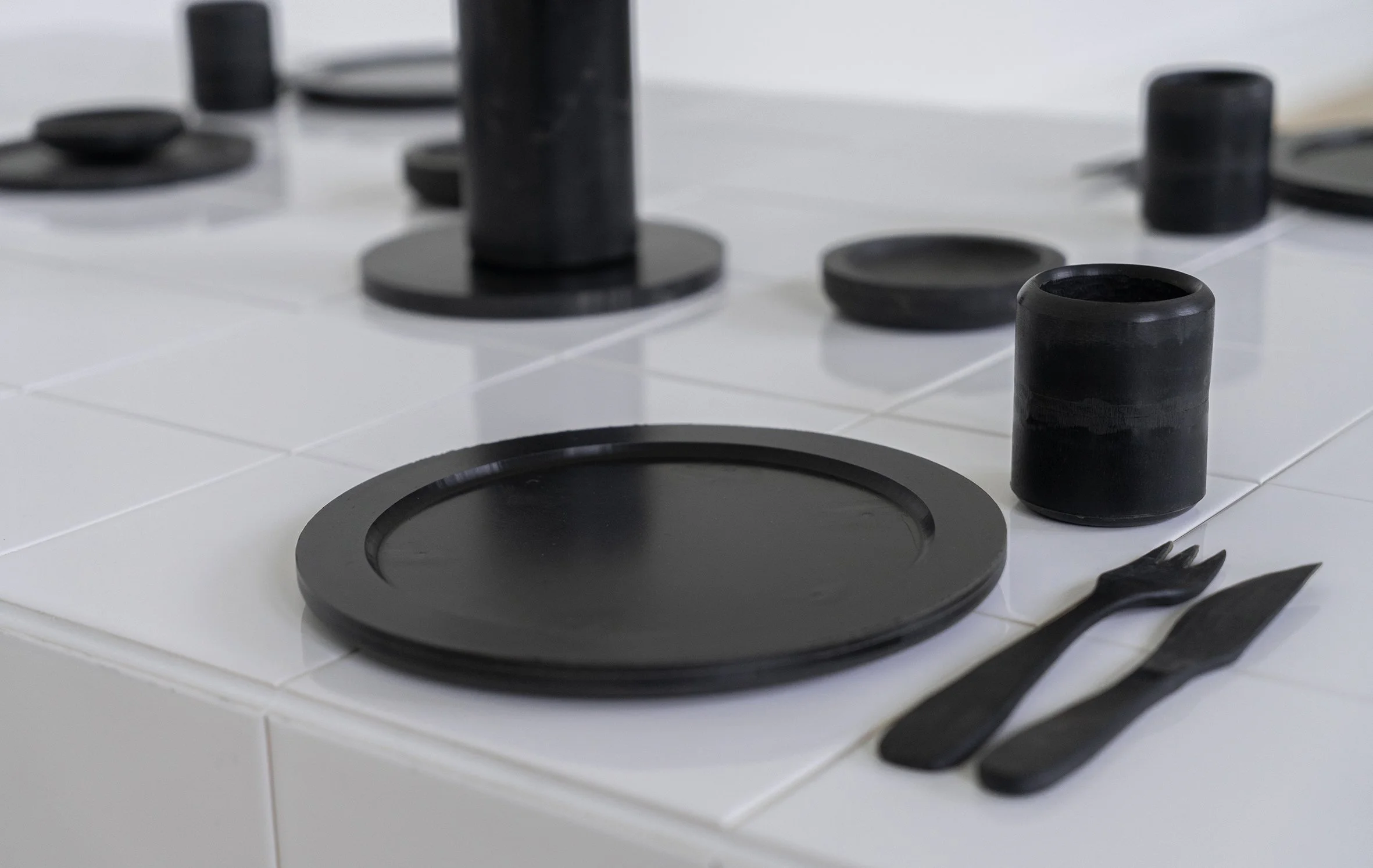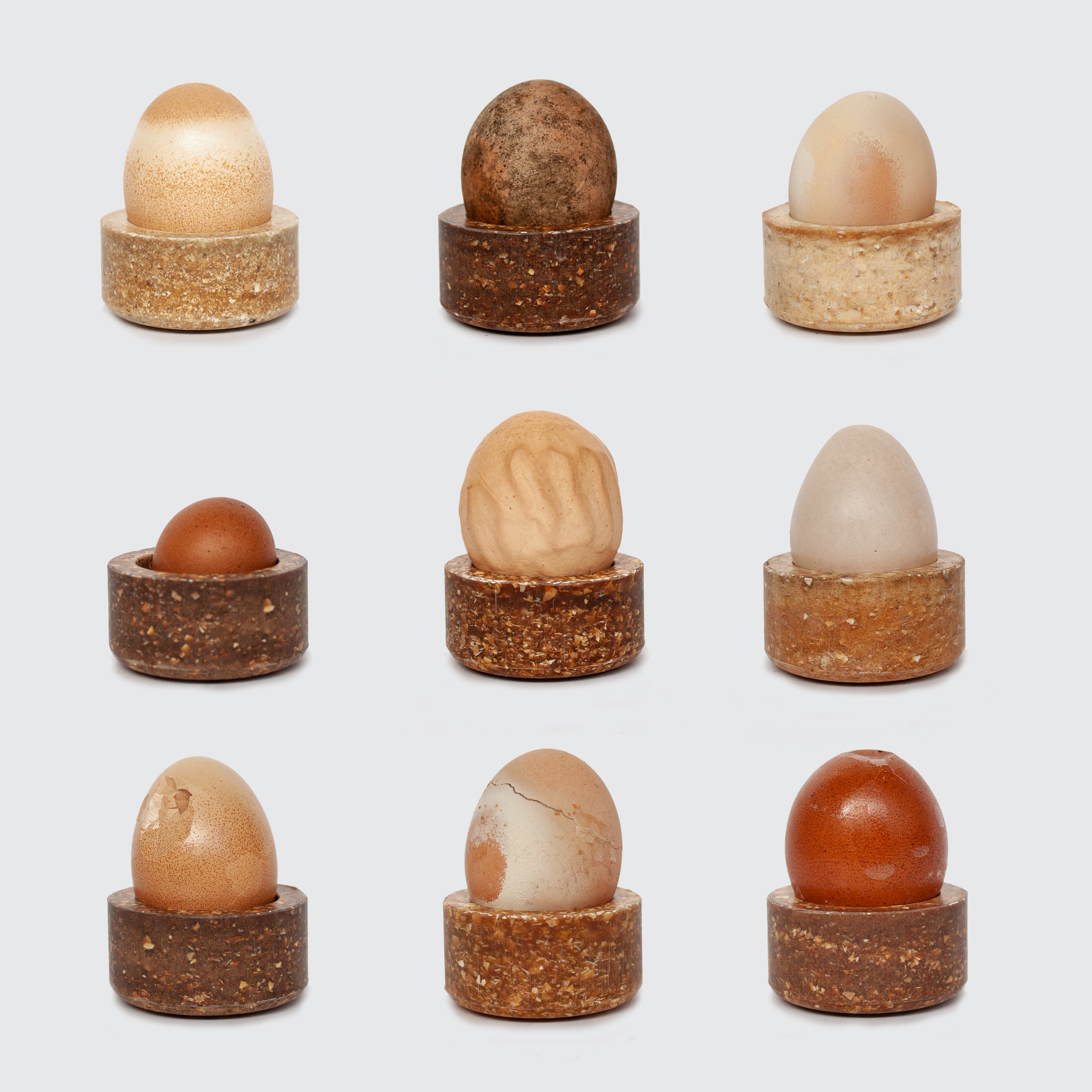Interview with Basse Stittgen
With Dutch Design Week on the horizon, it seems fitting to talk to a designer closely affiliated with the show this month. Basse Stittgen studied at Design Academy Eindhoven, whose graduation show is a must-see exhibition during the week-long events taking place across the city. Basse graduated in 2017, showcasing his Blood Related project to the world for the very first time, and with it, shone a light on a hugely overlooked byproduct of the slaughterhouse industry, blood. By transforming the abundant liquid into solid and intriguing formed objects he caught the eye and imagination of the design world, myself included. It wasn’t long before he set up his studio in a collective in Amsterdam, and has continued to explore materiality and how materials are created and cared for ever since. His output is rich in narrative and inherently playful, albeit with some serious questions posed in the process. As well as blood, he has experimented with and expanded the material possibilities of eggs and lignin, as well as various waste streams. At the heart of all his work is a desire to connect, or perhaps reconnect, people to the physical work and I caught up with him to find out more about this material journey.
JB: Let’s start with the first project that brought you to my attention, Blood Related. The material creates a very unique and rather complex narrative for the project and the pieces you make from it, given the myriad associations with blood, how do you find people tend to react to the work?
BS: There are countless notions and associations connected to blood, the most substantial being life and death - blood can symbolize both and worlds in between. This makes it interesting to work with it as it is a material every person has their own relation and connection to it. Often there is this initial bias as to what viewers expect an object made of blood to look like. What comes to mind are images of violence and disgust. Many are surprised to then see a material that breaks with those preconceived notions.
The intention of the pieces from the Blood Related series is to make something that is invisible physical. The slaughterhouse industry is one of the most resource-intensive industries today, yet it remains completely out of sight, which then also renders the animals and their blood invisible. Many people disassociate the act of eating meat from the killing of animals, the pieces I create aim to mend this broken thread in the human-animal relationship.
JB: Questioning and pushing the boundaries of materiality is at the heart of your practice, and byproducts of the body and the food we put in them seem to be central ingredients. Has that always been a conscious choice, or is there an unconscious coming together there?
BS: Initially my fascination for materiality came from the urge to create a material myself in order to get a more fine-grained understanding of material culture in general. I felt that when I was working with traditional materials such as wood, metal, plastic or ceramics it was because those materials were given to me and readily available. Because of that, I took them for granted, not questioning how they came into being and into my hands. A central theme of my work is the disconnection between production and consumption, and working with waste and by-products of production can become an intriguing lens to investigate consumption habits as well.
When I talk about this disconnection, I also talk about my own disconnection to those production systems - when I started working with blood, I did not know much about the slaughter industry, the same goes for the farming of chicken for the project How do you like your eggs? and the paper industry in the project Knock on Wood.
JB: There’s a strong argument to suggest that we have collectively lost touch with the materiality that forms our built environments, and your work is clearly a form of antidote to this but I’m interested to hear more about your emphasis on biobased materials.
BS: I believe that one of the reasons why we lost touch with the materials that surround us is hypercomplex large-scale industrial production. At times those systems make it impossible to trace the origin of a material, and because of that materials lose part of their inherent identity. In her book Braiding Sweetgrass Robin Wall Kimmerer asks the question: “How would we treat a piece of paper if we saw the tree it comes from?” This is a fundamental question for me in the project Knock on Wood, which reunites cellulose and lignin into a new biomaterial that can be described as remade wood.
When trees are cut down for consumption they can be turned into wood chips, and then into cellulose fiber by ways of extracting a brownish substance called lignin. This project harnesses the potential of cellulose and lignin, the most abundant natural polymers on Earth, whose natural connection was broken by the advent of industrial production. While the former has been overused by the paper and textile industry, the latter remains largely untested. As an underused by-product, it is often burned in thermal treatment facilities. However, in this series cellulose and lignin are rematerialised to create a new kind of wood, embodying traces of the tree they come from.
JB: Your work tends to come in quite striking and memorable forms and I’m intrigued to hear more about the creative process involved in selecting them. How do you go about designing the shapes and forms that you make from all these fascinating materials?
BS: The form follows the material in my projects. All objects I make are produced with the tools available to me in my studio, this means I’m always working within the limitations of the material and the processes at hand, which is equally exciting and frustrating at times. I constantly try to challenge those limitations by improving processes and techniques.
JB: Mobility often plays a part in your work too – projects such as Boys and Beans on Wheels and the Moving Matter Lab in particular – what is the thinking here?
BS: This answer might be a bit silly but: I love wheels! In the studio, all the machines and tables are on wheels, which gives the possibility to put together workstations with exactly what you need at that moment.
Boys & Beans on Wheels were both projects for places that are constantly in flux, so to adapt to that we made them mobile, next to that the idea was to translate childlike drawings into functional objects. The Moving Matter Laboratory on the other hand aims to offer a unique platform for doing research into biobased materials. It gives the chance to delve into investigations of production cycles and natural processes. Similar to a professional kitchen with its diverse workstations, this mobile unit consists of multiple parts that cater to specific activities associated with various aspects of material research. Through the lab, it’s possible to learn about a wide range of techniques, including thermoforming, natural dyeing, fragrance extraction, and many more.
To hear Basse talk even more extensively about his practice why not check out his illuminating TEDx Talk.
This article was first published by Design Insider.






